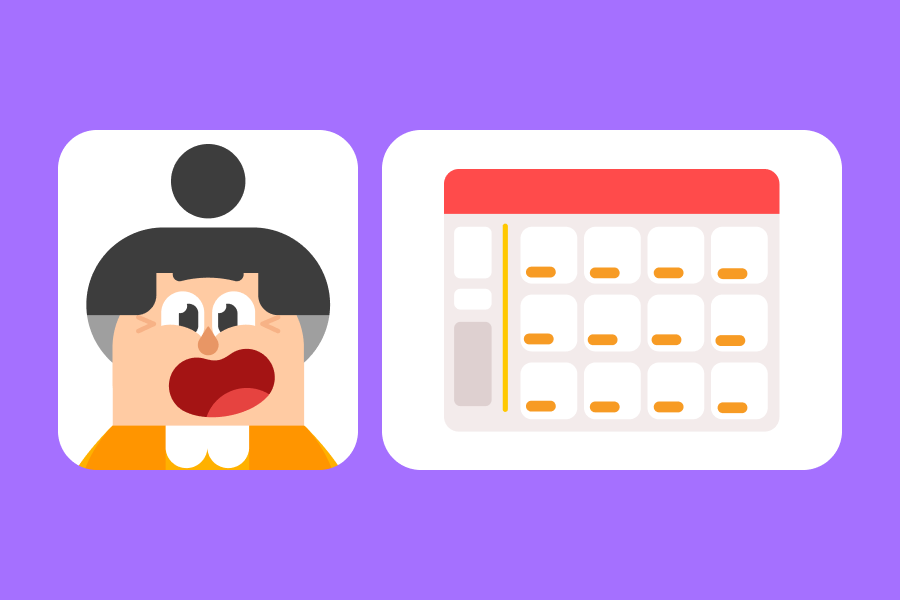English calendar terms are essential for learners to know—they help you discuss plans and schedules, whether you're planning your school year or an upcoming trip abroad! There's a lot of vocabulary to keep track of, and some important differences between English dialects.
The basic English calendar terms are:
day
week
month
year
decade (10 years)
century (100 years)
millennium (1000 years)
Here's everything you need to know about discussing days and dates in English!
The days of the week in English
In English, the days of the week are always capitalized, and the calendar starts on Sunday in North America, but on Monday in many other countries.
To ask someone what day it is in English, you'll say What day is it? or What day of the week is it?
Here are the days of the week in English:
Sunday
Monday
Tuesday
Wednesday
Thursday
Friday
Saturday
Other important vocabulary about days includes today, yesterday, and tomorrow. You can refer to Saturday and Sunday together with the word weekend. English also has a special word for "two weeks": fortnight! It comes from the phrase fourteen nights, and it's used in many parts of the English-speaking world, but seldom in the U.S.
The months of the year in English
Like the days of the week, in English the months of the year are also always capitalized:
January
February
March
April
May
June
July
August
September
October
November
December
The 4 seasons in English are winter, spring, summer, and autumn. In the U.S., you'll often hear fall instead of autumn.
Which seasons you experience in which months depends on where you live! In the Northern Hemisphere, winter is officially in December, January, and February—but in the Southern Hemisphere, those are summer months!
How to write the date in English
To ask for the date, you can ask What is today's date? or just What's the date?
There are 2 main ways to say and write the date in English, and which you use depends on where you are! There's one format used generally across the English-speaking world… and a different style is used in the U.S. 😅
The format used in most of the world is: day + month + year. You might see it abbreviated on forms as DD/MM/YYYY or DD/MM/YY (if you should only use the last 2 digits of the year). For example, the first day of July this year was 01/07/2023 or 01/07/23. If the date is spelled out, you'll see it as 1 July 2023 or just 1 July. Remember to always capitalize the month!
The format used in the U.S. is: month + day + year. Its abbreviation on forms is MM/DD/YYYY or MM/DD/YY, so the first day of July this year was 07/01/2023 or 07/01/23. When the date is spelled out, it will be July 1, 2023 or July 1.
It's clear how confusing this is, even for English speakers! If you see the date written as "07/01" you'll need to think about who wrote it and where they're from: It could mean either the first day of July *or* the seventh day of January. You'll have to do what English speakers do—ask for clarification. To be sure, you can also write out the month to make it clear what you mean.
In spoken language, the rules are a bit different: Instead of saying the cardinal number (like one or seventeen), you'll use the ordinal number (like first or seventeenth). So for 1 July, you'll hear the first of July, and for July 1, U.S. speakers will say July first. In fact, U.S. speakers *do* use the other format, sometimes—like when they celebrate the 4th of July!
The best *day* to practice English is *today*!
Learners of all levels will need to express and understand English calendar terms. Focus on practicing the words and expressions that are different from your own language—that way, your English tomorrow will be even better than today!



